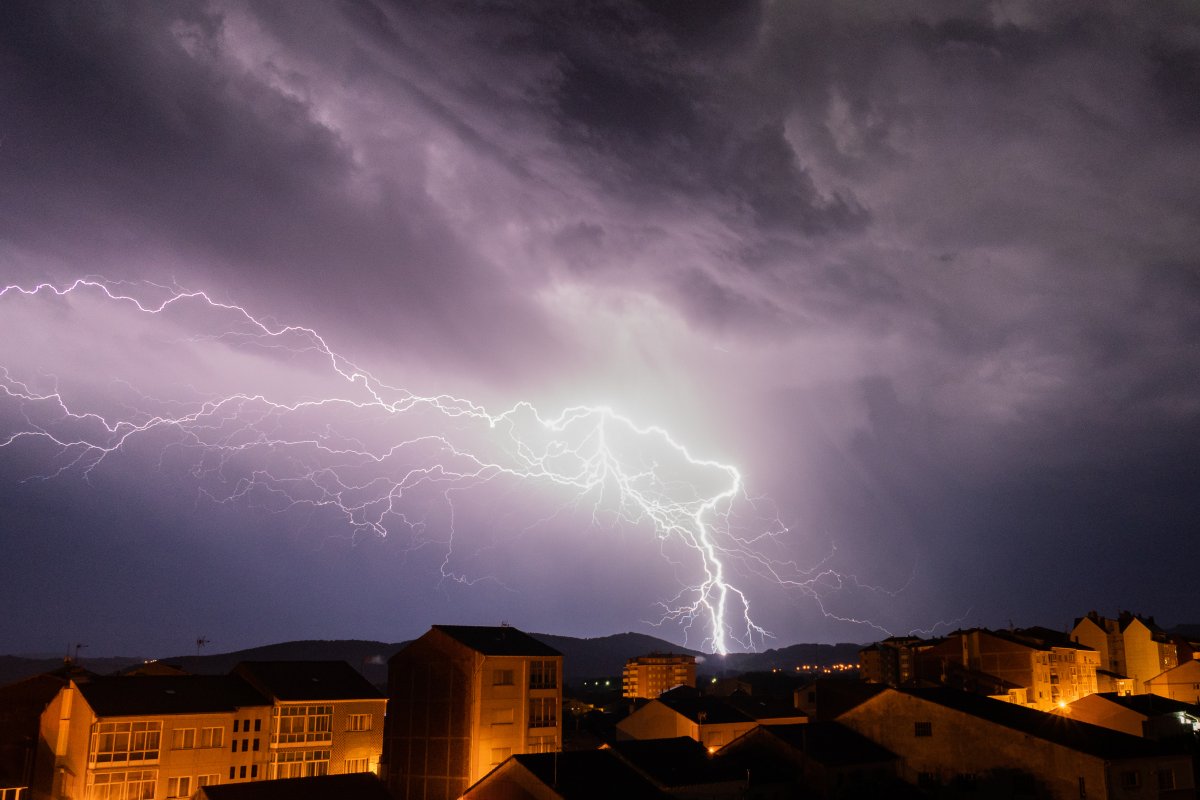Summertime is thunderstorm time. In Germany, too, there were strong thunderstorm fronts again last week due to the persistently high temperatures – a phenomenon that is likely to intensify in the course of man-made climate change. Because the hotter the earth gets, the more extreme the weather becomes. In order to be able to recognize storms faster in the future and warn people in affected regions, scientists are relying on new technology in space, among other things.
Advertisement
Earlier this month, the European Space Agency (ESA) and the European Organization for the Exploitation of Meteorological Satellites (Eumetsat) in Darmstadt published for the first time animations of the so-called “Lightning Imager” on board the latest Meteosat-12 satellite, which was launched on March 13. December 2022 started. It is the first satellite instrument capable of continuously detecting lightning in Europe, Africa and the Middle East.
Developed by Italian aerospace company Leonardo, the instrument contains four cameras that are permanently aimed at Europe, Africa, the Middle East and parts of South America. From 36,000 kilometers away, they can record up to 1,000 frames per second and thus detect flashes shorter than a blink. Meteosat-12 is the first of a total of six third-generation satellites. In addition to the “Lightning Imager”, they contain other instruments to be able to observe the weather and atmospheric changes more closely.
The animations now presented contain recordings of different regions over a period of one minute each, which have been combined with current satellite images of the earth. According to Eumetsat, this is still data with a “lower sensitivity setting” because the instrument is still being calibrated. From 2024 it should then go into operation and deliver real-time data to weather services.
Lightning analysis with artificial intelligence
“There are often abrupt changes in lightning activity ahead of severe thunderstorms,” says Phil Evans, Eumetsat’s Director General. By observing activity, meteorologists are able to make better predictions about the strength of storms and thunderstorms. In addition, the recordings obtained could be used in the longer term for research into climate change.
Advertisement
Since 1,000 high-resolution photos per second generate a lot of data, they are processed on board Meteosat with the help of artificial intelligence (AI). Algorithms ensure that the data is compressed by a factor of 1,000 and only relevant information is transmitted to earth. Through machine learning, the system should be able to use only those recordings that actually show lightning activity.
The idea of tracking storms and lightning from space is not entirely new. The US weather satellite GOES-16 from 2016 has new recording instruments designed for observing lightning activity. The data is fed into the LightningCast project, among other things, where it is also processed with the help of AI. In a direct comparison, the new “Lightning Imager” from Meteosat should take even higher resolution images, according to Eumetsat.
The fact that the observation of storms is becoming more and more important is also because there will very likely be more and more extreme weather events in the future – also in this country, by the way. The German weather service expects more storms, extreme rainfall and heat waves in the future, and researchers from Austria found in a study published in April that lightning activity has almost doubled in the higher alpine regions alone in the past 40 years. A trend that is “clearly consistent with global changes in the climate system,” the researchers say.
(jl)
To home page
